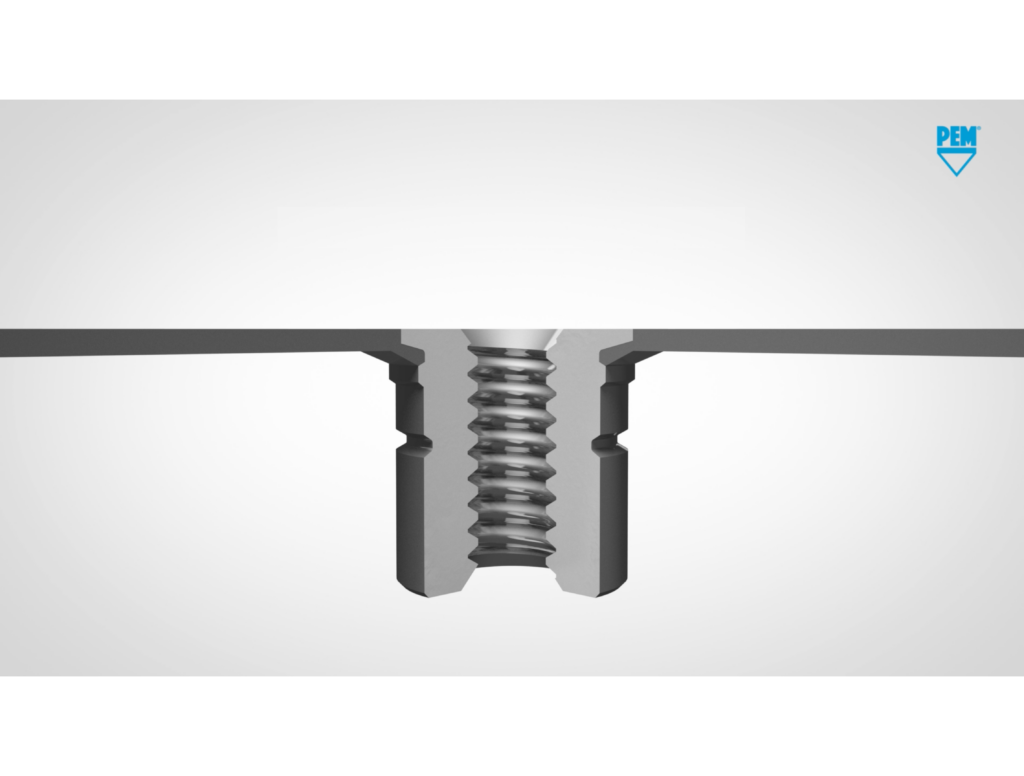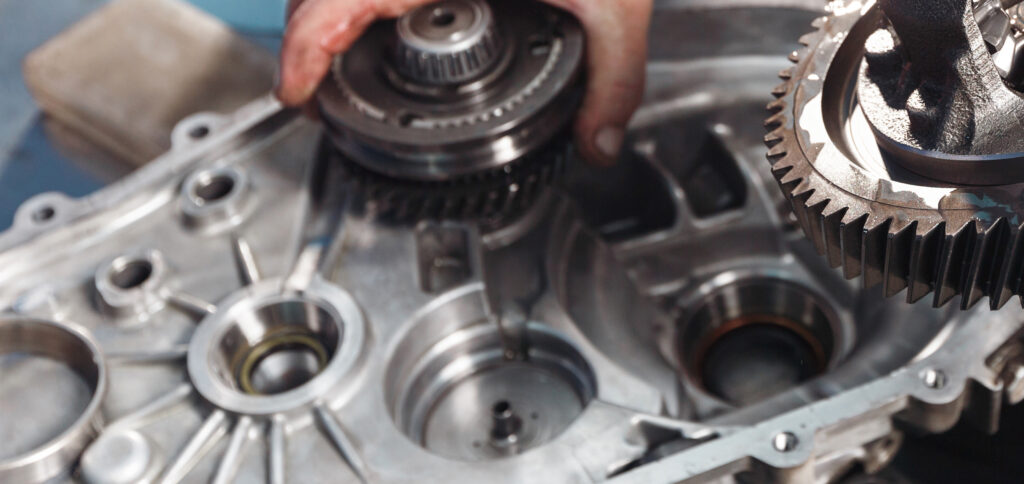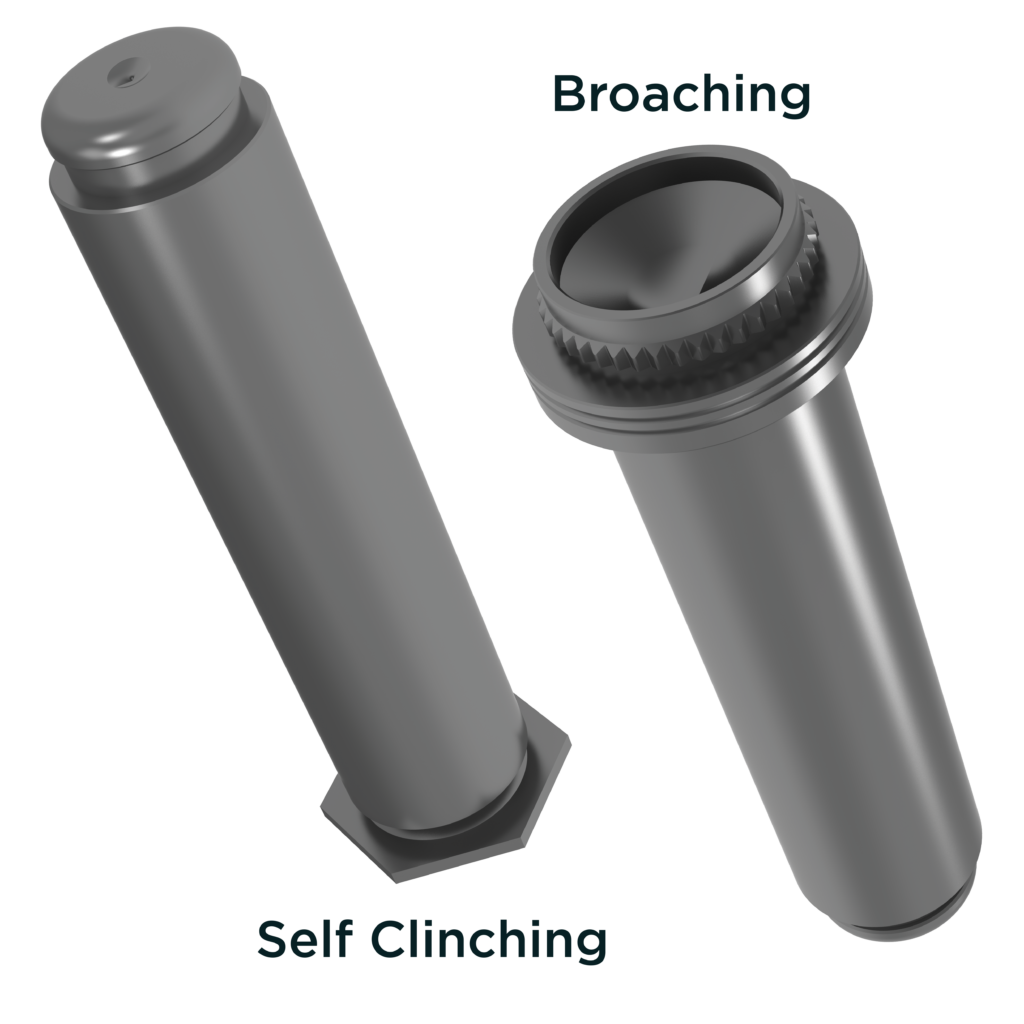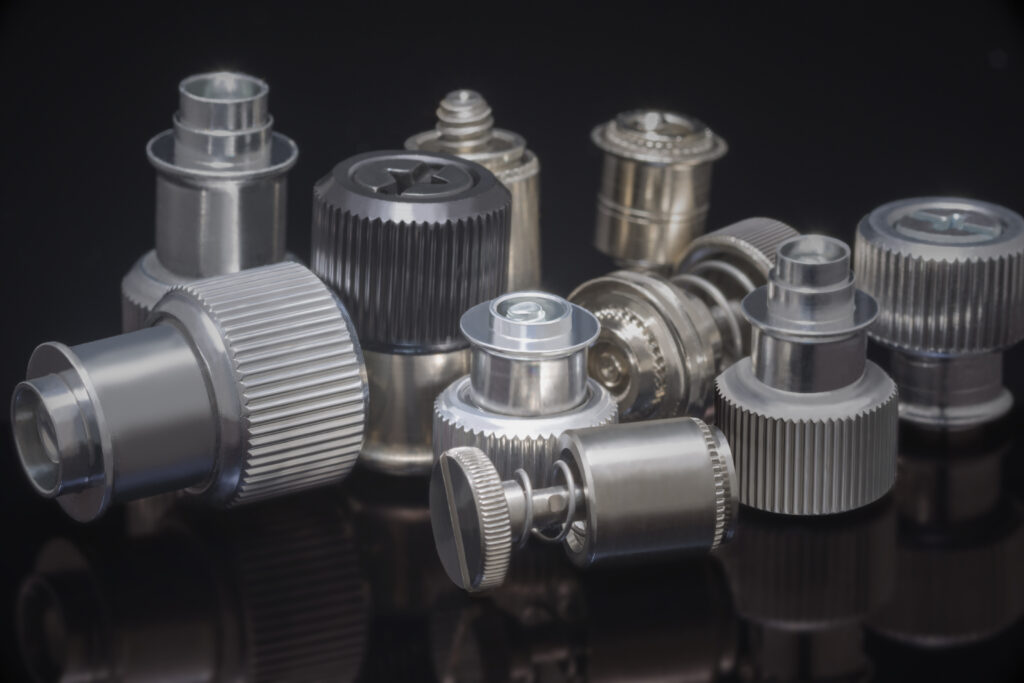
Table of Contents
Product Pages
Standoffs
KEYHOLE® Standoffs
SNAP-TOP® Standoffs
Nuts
Clinch Nuts
Floating Nuts
Blind Nuts
Flush Nuts
Locking Nuts
Rivet Nuts
Studs
Locating Pins
Captivated Screws
Simple Screws
Spring-Loaded Screws
Knob Cap Screws
Threaded Inserts
Press-In Inserts
Molded-In Inserts
Ultrasonic/Heat-Staking Inserts
Compression Limiters
Specialty Fasteners
Cable Tie Mounts
TACKPIN®
Panel-to-Panel Fasteners
Right Angle Fasteners
Attachment Technologies
Overview
The simplest captivated screw is very similar to a regular screw with two specific features. The threads at the tip have an outer diameter greater than the unthreaded length between the head and the tip, while a flat step that is slightly larger than the thread diameter is fashioned on the underside of the head. While this is designed to retain itself in a panel by deforming it, the step on the head can be traded for a self-clinching retainer with a thin thread that accepts the screw. The design assumes the use of a tool in application and can accept a drive like a flathead or Philips head screwdriver.
Application
Given that an application for a screw with no retainer was discussed in the captivated screws section, here let’s consider the flare-mounted retainer. In some larger scale datacom applications, maximizing density is preferable for space efficiency. Mounting hardware for a cover plate might be as close to the edges of the panel as possible. This allows more room for internal components but limits the amount of material available to deform. A flare-mounted retainer allows for a captivated screw to attach closely and securely to the edge of the panel without unwanted deformation.
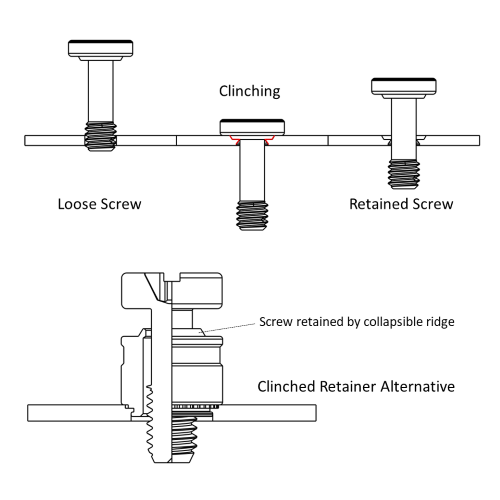
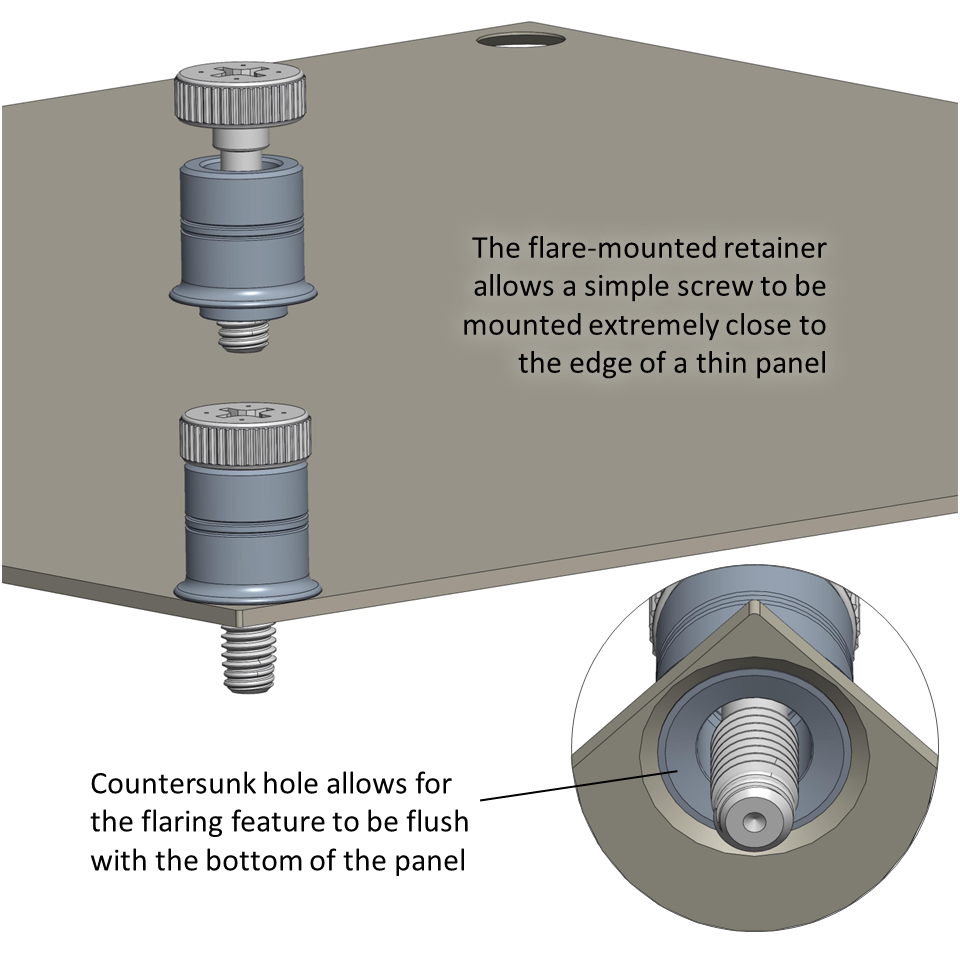
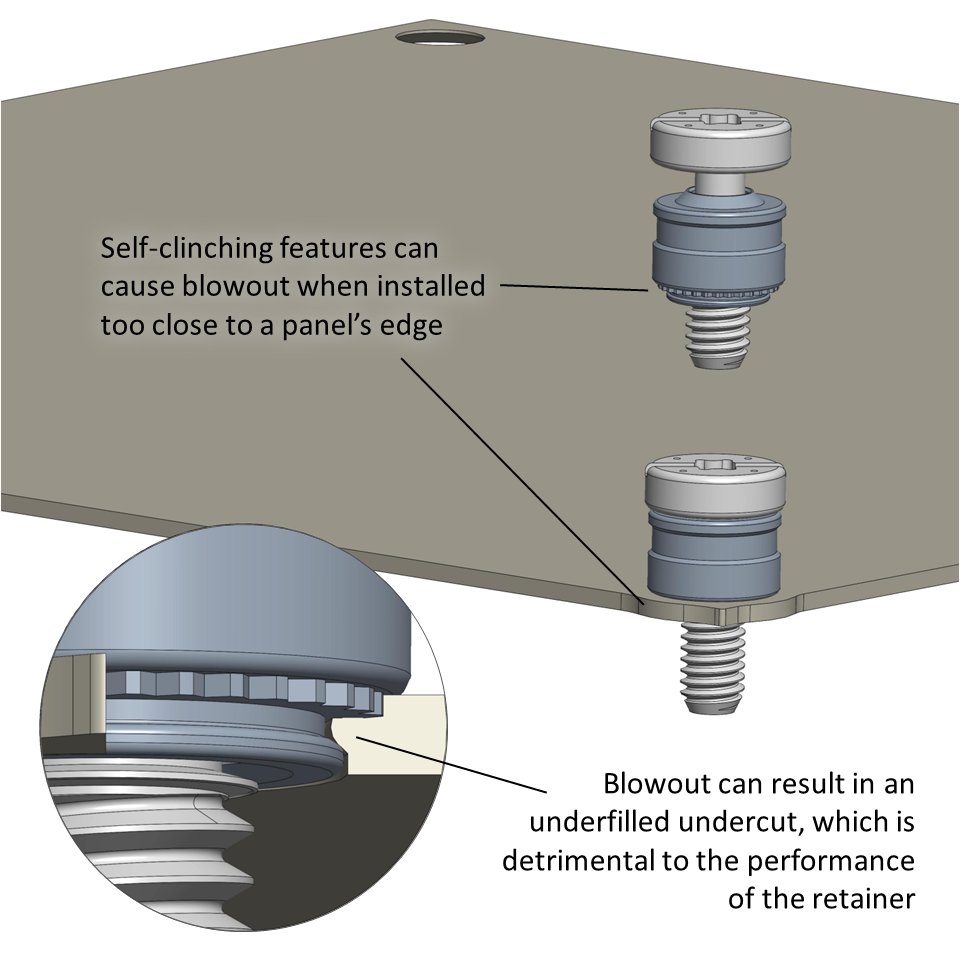
When tasked with maximizing the use of space, flare-mounted panel fasteners can mount screws
close to the edges of a cover plate without damaging the panel.
Alternative Solutions
Since flare mounted retainers rely on deforming the retainer against the panel, the hole in the panel requires a Countersink on the bottom side to accommodate moving material. This introduces an additional step in the manufacturing process. A self-clinching retainer doesn’t require this step and has the additional benefit of no protrusion on the opposite side of the panel from a flared shank, allowing for a tighter joint between surfaces. However, due to the deformation of a panel required to fill the clinching undercut, the hole needs to be further from the edge to avoid buckling the panel. The hardware for the mating thread that accepts the screw will then further encroach on the internals of the server housing.
Common Attachment Technologies
While retainers can utilize any of the available attachment technologies based on the application, captivated screws without a retainer might fit best within the self-clinching category. Requiring a metal panel of a minimum thickness, the step on the underside of the head deforms the panel inwards so the threads prevent the screw from falling out.
Relevant Products from PEM:
See size and material options for simple screws in our Product Finder:
To learn more, visit the PF Datasheet for simple captivated screws.
Have a project?
Let’s get started.
Talk to us about creating a custom part, tool or process. We are equipped to help you to take on and solve your biggest engineering challenges.
Talk to us about creating a custom part, tool or process. We are equipped to help you to take on and solve your biggest engineering challenges.

Looking for CAD Downloads?
Access to the original PEM Catalog and CAD downloads.
Have a question?
Talk to an Engineer.
See what’s possible.
Connect with a PEM® engineering expert today and discover a reliable, cost-effective fastening solution for your challenging applications.
Or Call Us: 1-800-342-5736


